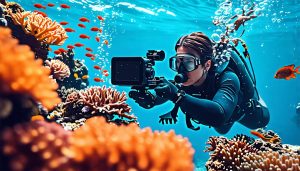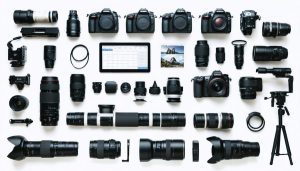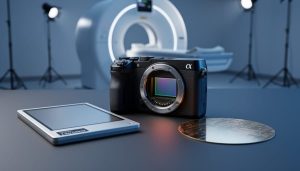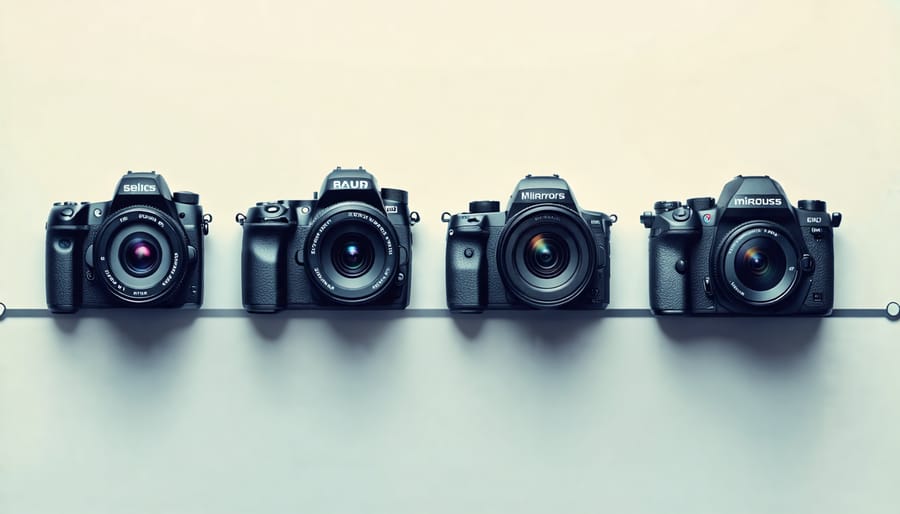
Discover the game-changing advantages of mirrorless cameras that are revolutionizing the world of photography. Mirrorless cameras offer superior image quality, lightning-fast autofocus, and unparalleled versatility in a compact, lightweight package. With cutting-edge features like electronic viewfinders, silent shooting modes, and advanced video capabilities, mirrorless cameras empower photographers to push the boundaries of their creativity. Whether you’re a professional looking to streamline your gear or an enthusiast seeking the best mirrorless cameras to unleash your potential, these innovative tools provide a new level of precision, flexibility, and control. Embrace the mirrorless revolution and experience the future of photography today.
Smaller and Lighter
One of the most noticeable advantages of mirrorless cameras is their compact size and lightweight design compared to traditional DSLRs. By eliminating the bulky mirror box mechanism found in DSLRs, mirrorless cameras can be made much smaller and lighter without compromising on image quality or performance.
This reduction in size and weight offers numerous benefits for photographers. For travel enthusiasts, a smaller camera body means less space taken up in your luggage and a lighter load to carry around during long days of exploration. Whether you’re hiking through scenic trails or navigating bustling city streets, a compact mirrorless camera allows you to capture stunning images without the burden of heavy gear.
The portability of mirrorless cameras also makes them ideal for prolonged shooting sessions, such as weddings or events. With a lighter camera body, you can minimize fatigue and maintain your creativity throughout the day. This is especially valuable for photographers who need to be agile and discreet, like street photographers or photojournalists.
Moreover, the compact nature of mirrorless cameras extends to their lens systems. Many mirrorless camera manufacturers offer a range of compact lenses that are specifically designed to complement the smaller camera bodies. These lenses often deliver excellent optical quality while maintaining a portable form factor, giving photographers the flexibility to create diverse imagery without the need for heavy, bulky lenses.
In summary, the smaller and lighter design of mirrorless cameras offers a host of advantages for photographers who value portability and convenience without sacrificing image quality. Whether you’re a globe-trotting adventurer or a professional shooter, the compact nature of mirrorless cameras can greatly enhance your photography experience and expand your creative possibilities.
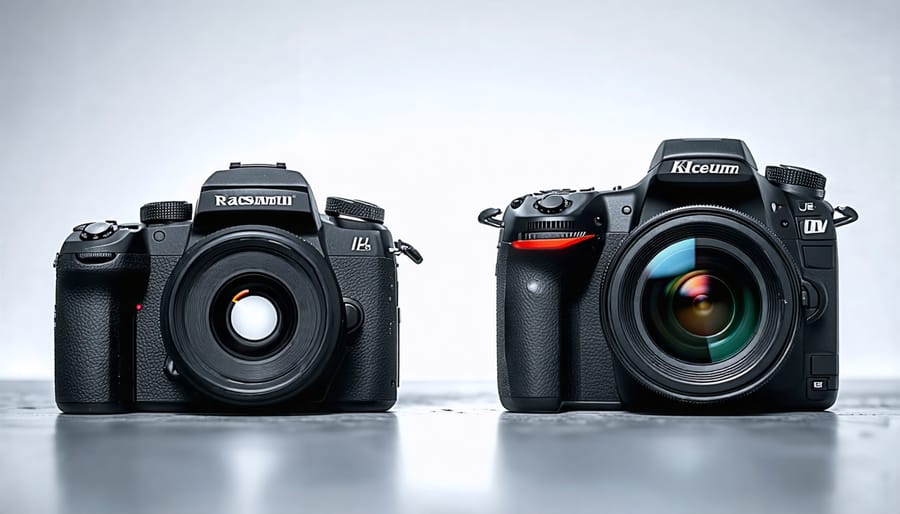
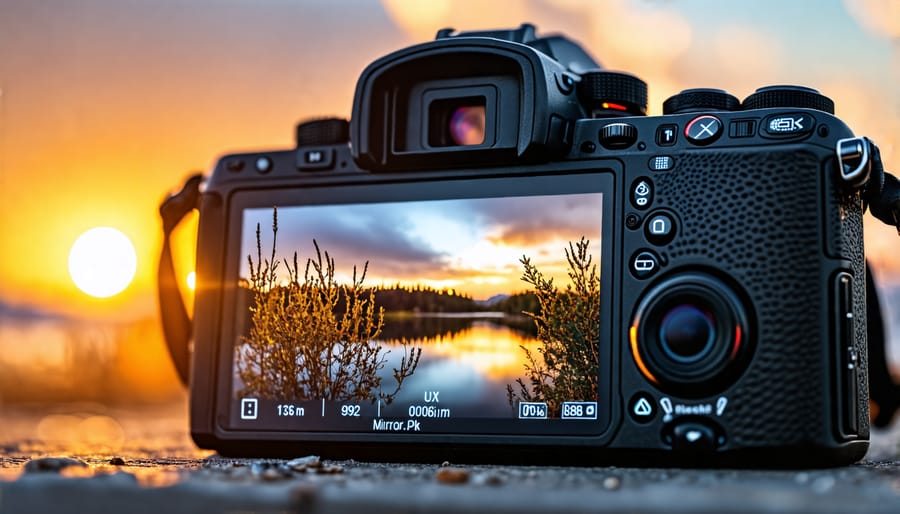
Electronic Viewfinder Advantages
One of the key advantages of mirrorless cameras is the electronic viewfinder (EVF). Unlike optical viewfinders found in DSLRs, EVFs provide a real-time preview of your image, allowing you to see exactly what the camera sensor sees. This means you can instantly assess exposure, white balance, and depth of field before capturing the shot.
With an EVF, you can make adjustments on the fly and see their impact immediately. If the image is too bright or too dark, you can tweak the exposure compensation and watch the preview change accordingly. This is particularly helpful in tricky lighting situations where nailing the exposure is crucial.
EVFs also offer a range of helpful features that enhance the shooting experience. Focus peaking, for example, highlights areas of sharp focus in the viewfinder, making manual focusing a breeze. This is especially useful when working with wide apertures or in low-light conditions.
Another benefit of EVFs is the ability to review images without taking your eye away from the viewfinder. After capturing a shot, you can quickly check the image for sharpness, composition, and exposure, making necessary adjustments before moving on to the next frame. This streamlines the shooting process and helps you catch any issues on the spot.
Moreover, EVFs can display a wealth of information, such as histograms, electronic levels, and camera settings, allowing you to make informed decisions without ever looking away from the viewfinder. This is particularly valuable in fast-paced shooting scenarios where every second counts.
In summary, the electronic viewfinder is a game-changer for photographers, providing real-time previews, focus peaking, image review, and a host of other features that enhance the shooting experience and help you capture the perfect shot every time.
Superior Autofocus Performance
One of the standout advantages of mirrorless cameras is their superior autofocus performance. Unlike DSLRs, which rely on a separate AF sensor, mirrorless cameras use the main imaging sensor for both focusing and capturing the image. This allows for faster, more precise focusing, especially in challenging situations like low light or with moving subjects.
Mirrorless cameras excel in continuous autofocus during video recording, a weakness of many DSLRs. Their on-sensor focus systems can smoothly and silently adjust focus without the hunting or noise often associated with DSLR video AF. This makes mirrorless an attractive choice for vloggers, videographers, and hybrid shooters.
Advanced features like face and eye detection have become increasingly common and effective in mirrorless cameras. Using sophisticated algorithms, these systems can lock onto and track human subjects with impressive accuracy, ensuring critical focus even with shallow depth of field. Some cameras can even detect and focus on animal eyes.
Another mirrorless AF advantage is the high number and density of focus points across the frame. While DSLRs are limited by discrete AF points, mirrorless cameras can often focus nearly anywhere in the frame, with hundreds or even thousands of selectable points. This flexibility is invaluable for off-center compositions or subjects near the edges of the frame.
The electronic viewfinder in mirrorless cameras also aids focusing by allowing you to see a live preview with exposure and depth of field. Focus peaking and magnification make manual focusing a breeze. With their cutting-edge AF technology and user-friendly focusing aids, mirrorless cameras make it easier than ever to nail focus in any situation.
Silent Shooting
One of the key advantages of mirrorless cameras is their ability to shoot silently using an electronic shutter. This feature is particularly beneficial for photographers capturing images in sensitive environments where even the slightest noise can disrupt the scene or subject.
In wildlife photography, the silent shooting mode allows photographers to capture intimate moments without startling animals, ensuring more natural and authentic shots. Similarly, during events such as weddings or performances, a silent shutter ensures that the photographer remains unobtrusive and does not distract from the proceedings.
Moreover, silent shooting modes also help reduce camera shake caused by shutter vibrations. This is especially useful when shooting with longer lenses or in low-light situations where even minor vibrations can result in blurry images. By eliminating the mechanical shutter’s movement, mirrorless cameras offer a more stable platform for capturing sharp, detailed photos.
In addition to the practical benefits, the silent shooting feature also opens up new creative possibilities. Street photographers, for example, can capture candid moments without drawing attention to themselves, while wildlife photographers can experiment with unique perspectives and angles without worrying about disturbing their subjects.
WYSIWYG Experience
One of the standout advantages of mirrorless cameras is the What You See Is What You Get (WYSIWYG) experience they offer. Unlike traditional DSLRs, mirrorless cameras provide a real-time preview of your image directly through the electronic viewfinder (EVF) or rear LCD screen. This means you can see exactly how your final image will look before you even press the shutter button.
The WYSIWYG experience is particularly beneficial when it comes to exposure simulation. Mirrorless cameras can accurately display the effects of your chosen aperture, shutter speed, and ISO settings in real-time. If you’re shooting in tricky lighting conditions, such as high-contrast scenes or low light environments, this feature is a game-changer. You can instantly see if your image is too bright, too dark, or if highlights are being blown out. This allows you to make on-the-fly adjustments to your settings to nail the perfect exposure.
Additionally, the WYSIWYG experience extends to other camera settings like white balance, creative filters, and picture profiles. You can experiment with different looks and styles without guesswork, seeing the impact of your choices immediately. This not only saves time in post-processing but also helps you develop your creative vision as you shoot.
For beginners and experienced photographers alike, the WYSIWYG experience offered by mirrorless cameras is a valuable tool. It takes the guesswork out of capturing the perfect shot and allows you to focus on the creative aspects of photography. Whether you’re shooting landscapes, portraits, or any other genre, the real-time preview and exposure simulation will help you achieve the results you envision with confidence.
Enhanced Video Capabilities
Mirrorless cameras have rapidly evolved to offer superior video capabilities compared to traditional DSLRs. One significant advantage is their advanced autofocus systems, which often rely on cutting-edge technologies like phase detection and eye-tracking AF. These features ensure that your subjects remain crisp and in focus, even when moving dynamically within the frame. The real-time feedback provided by the electronic viewfinder (EVF) is another game-changer for videographers. You can see exposure adjustments, focus peaking, and other critical settings directly in the viewfinder, allowing you to make precise tweaks on the fly without interrupting your recording.
Moreover, many mirrorless cameras now offer professional-grade video specs that surpass the capabilities of most DSLRs. You’ll commonly find features like 4K resolution at high frame rates, 10-bit color depth for enhanced grading flexibility, and log profiles that maximize dynamic range. Some models even support external RAW video recording, giving you unparalleled control over your footage in post-production.
The compact form factor of mirrorless cameras also lends itself well to video work, especially when shooting handheld or in tight spaces. With the ability to adapt lenses from various systems using mount adapters, you can craft a highly customized and portable video rig tailored to your needs. Whether you’re a professional filmmaker or an enthusiast looking to explore the world of video, mirrorless cameras provide a compelling blend of advanced features, intuitive aids, and impressive image quality that make them a top choice in the modern era of content creation.
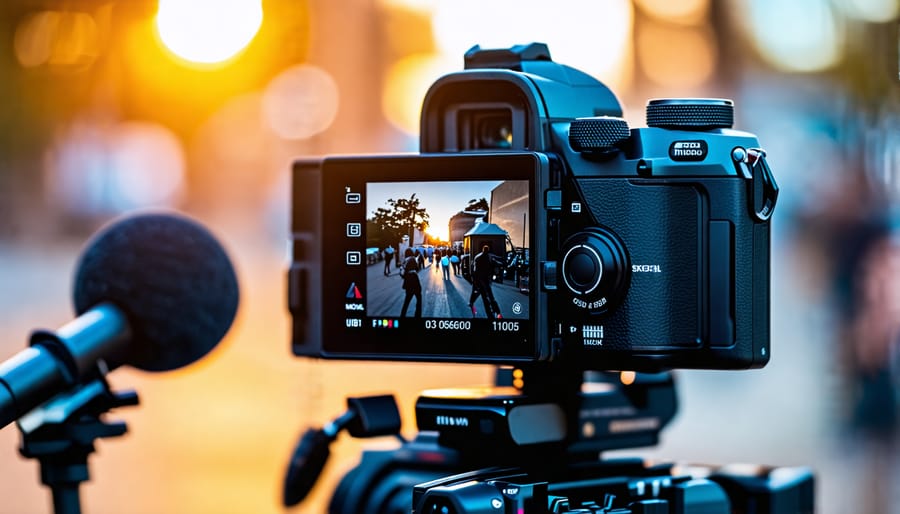
Rapid Innovation and Unique Features
One of the most exciting advantages of mirrorless cameras is their ability to facilitate rapid innovation cycles. Without the physical constraints of a mirror box, manufacturers have greater flexibility to introduce cutting-edge features and unique capabilities. This has led to an accelerated pace of technological advancement in the mirrorless market.
Many brands now offer exclusive features that set their mirrorless cameras apart. For example, Fujifilm’s renowned film simulation modes allow photographers to apply the look of classic film stocks to their digital images, inspiring creativity and nostalgia. Other manufacturers have developed advanced autofocus systems, in-body image stabilization, and high-resolution electronic viewfinders that provide a clear advantage over traditional DSLRs.
This spirit of innovation has not only improved technical performance but has also opened up new creative possibilities for photographers. With features like silent shooting, focus peaking, and real-time exposure preview, mirrorless cameras enable photographers to work in ways that were previously impossible or impractical with DSLRs. As a result, mirrorless systems have become the tools of choice for many professionals and enthusiasts alike, who value the unique blend of cutting-edge technology and creative flexibility they offer.
Conclusion
In conclusion, mirrorless cameras offer a range of advantages that make them a compelling choice for photographers of all levels. From their compact and lightweight design to their advanced autofocus capabilities, electronic viewfinders, and adaptability with various lenses, mirrorless cameras provide a versatile and powerful tool for capturing stunning images. While DSLRs still have their place, particularly for those who prefer an optical viewfinder or have a significant investment in DSLR lenses, the rapid advancements in mirrorless technology are quickly closing the gap.
As more photographers discover the benefits of mirrorless cameras, it’s clear that this technology represents the future of photography. Mirrorless systems will continue to evolve and improve, offering even more features and capabilities that will appeal to a wide range of users. Whether you’re buying a mirrorless camera for the first time or considering a switch from a DSLR, there’s never been a better time to embrace the mirrorless revolution. With their impressive performance, portability, and adaptability, mirrorless cameras are poised to become the go-to choice for photographers who demand the best in image quality and functionality.

